Abstract
Schwab, G. E. (University of Adelaide, Adelaide, South Australia), and P. R. Reeves. Comparison of the bactericidal activity of different vertebrate sera. J. Bacteriol. 91:106–112. 1966.—The bactericidal activity for gram-negative bacteria of normal sera from eight species of vertebrates was investigated to compare complement-mediated killing in sera from animals representing various classes of vertebrates. Although all the sera were bactericidal, there was considerable variation in the range of bacterial species killed and in the bactericidal titers. The temperature dependence of the bactericidal and hemolytic complement activities was also studied. The curves relating activity to temperature were similar in shape for sera from a homeotherm and poikilotherms, but those for the homeotherm reached their maximum at temperatures of 5 to 10 C higher than the poikilotherms. The role of lysozyme and complement in killing rough gram-negative bacteria was examined, and the results suggest that, as for smooth organisms, killing is due to antibody plus complement. These natural antibodies, like those for smooth strains, were shown to be specific.
Full text
PDF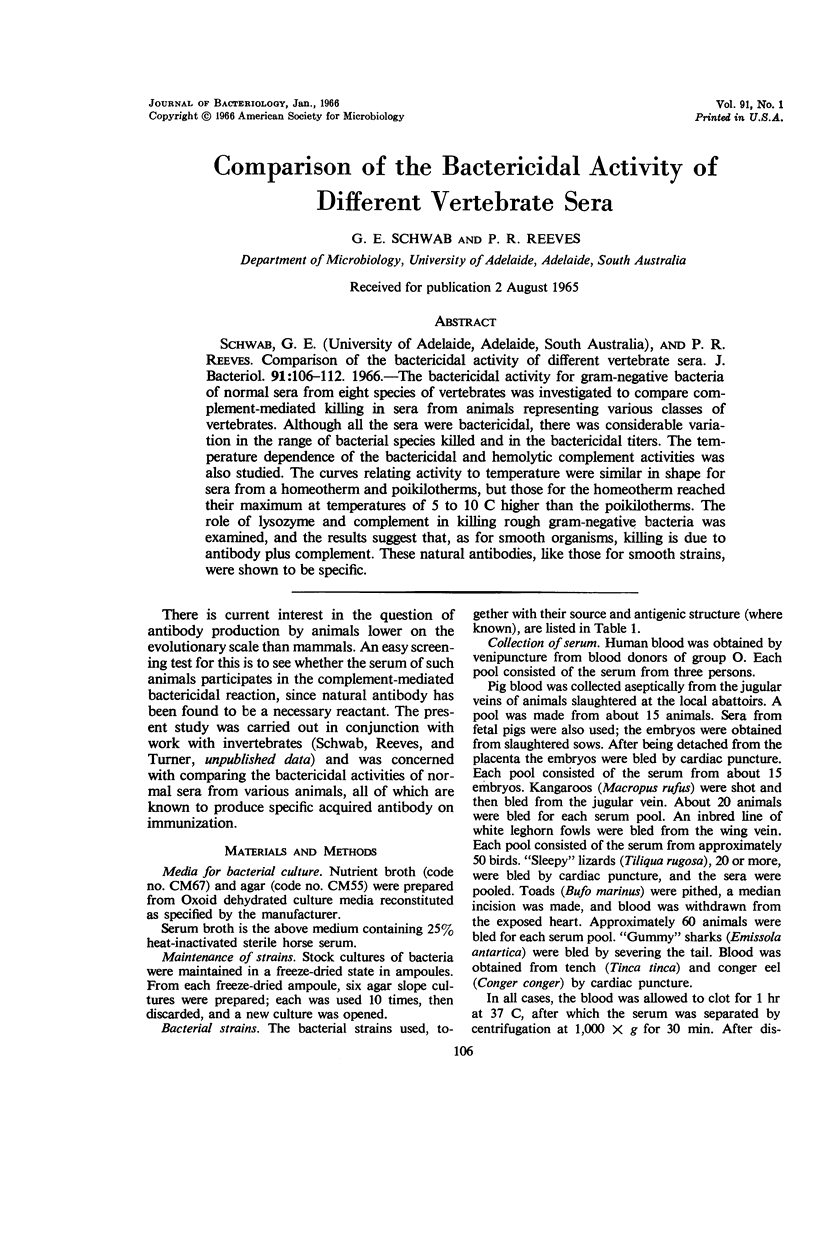
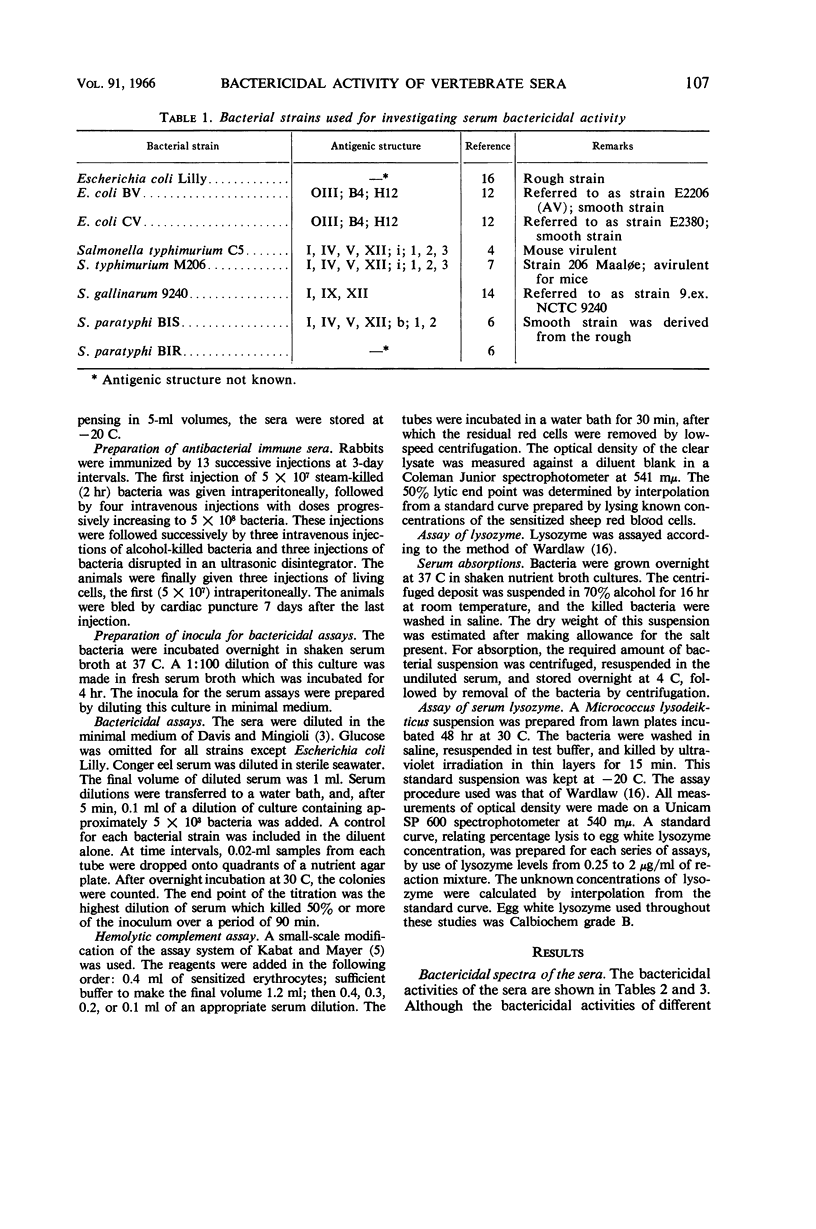
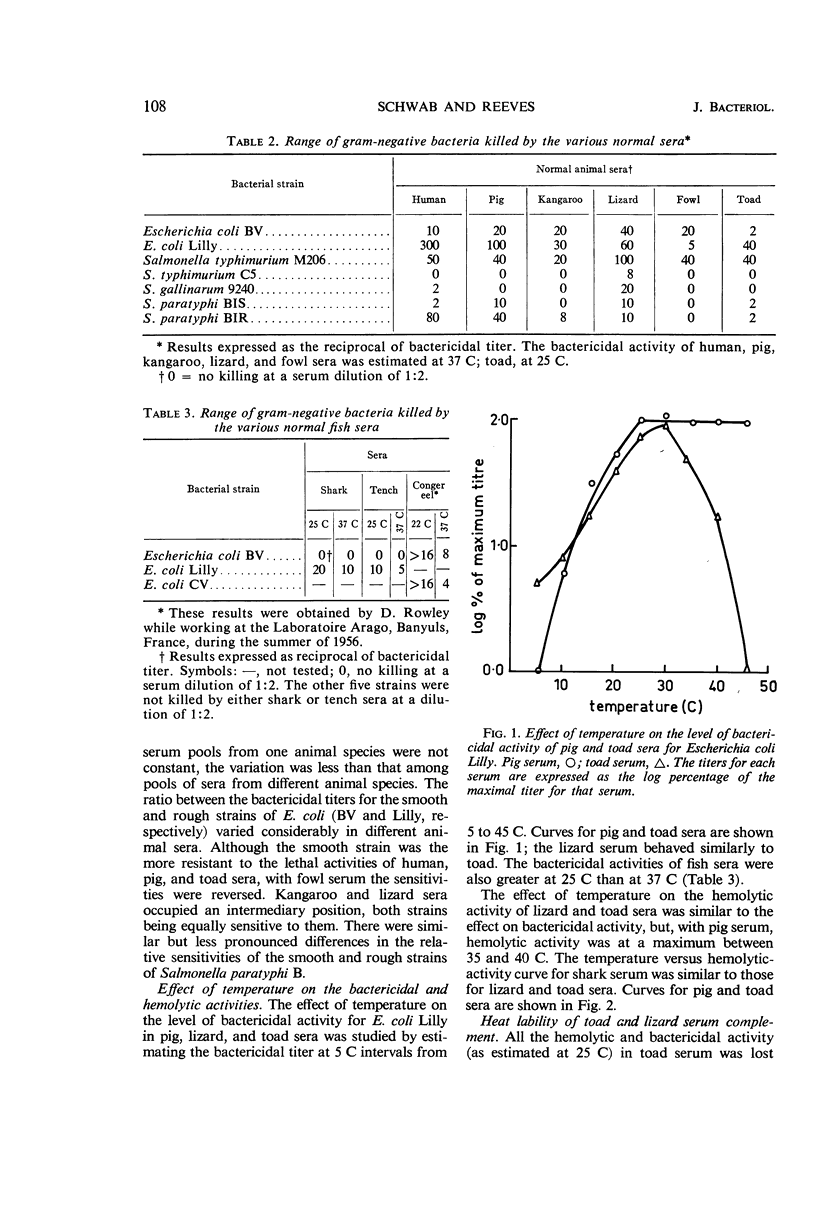
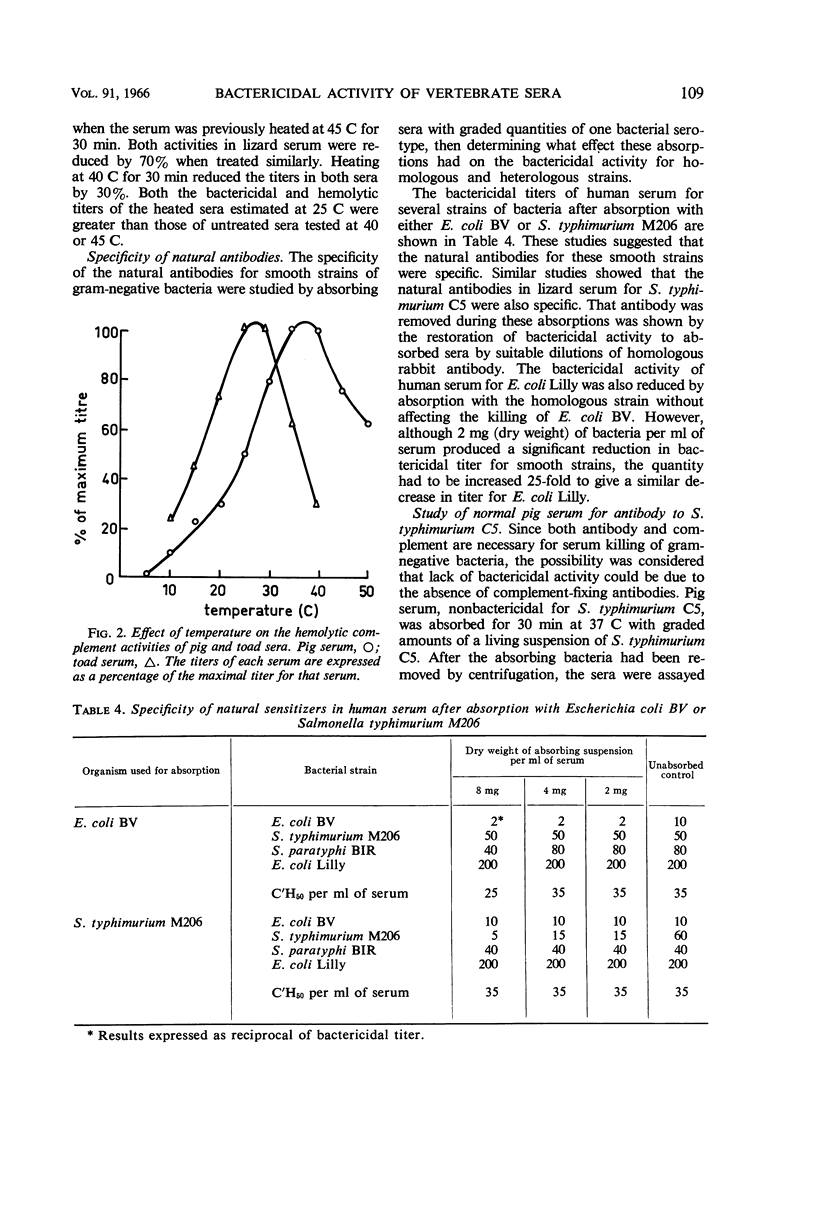
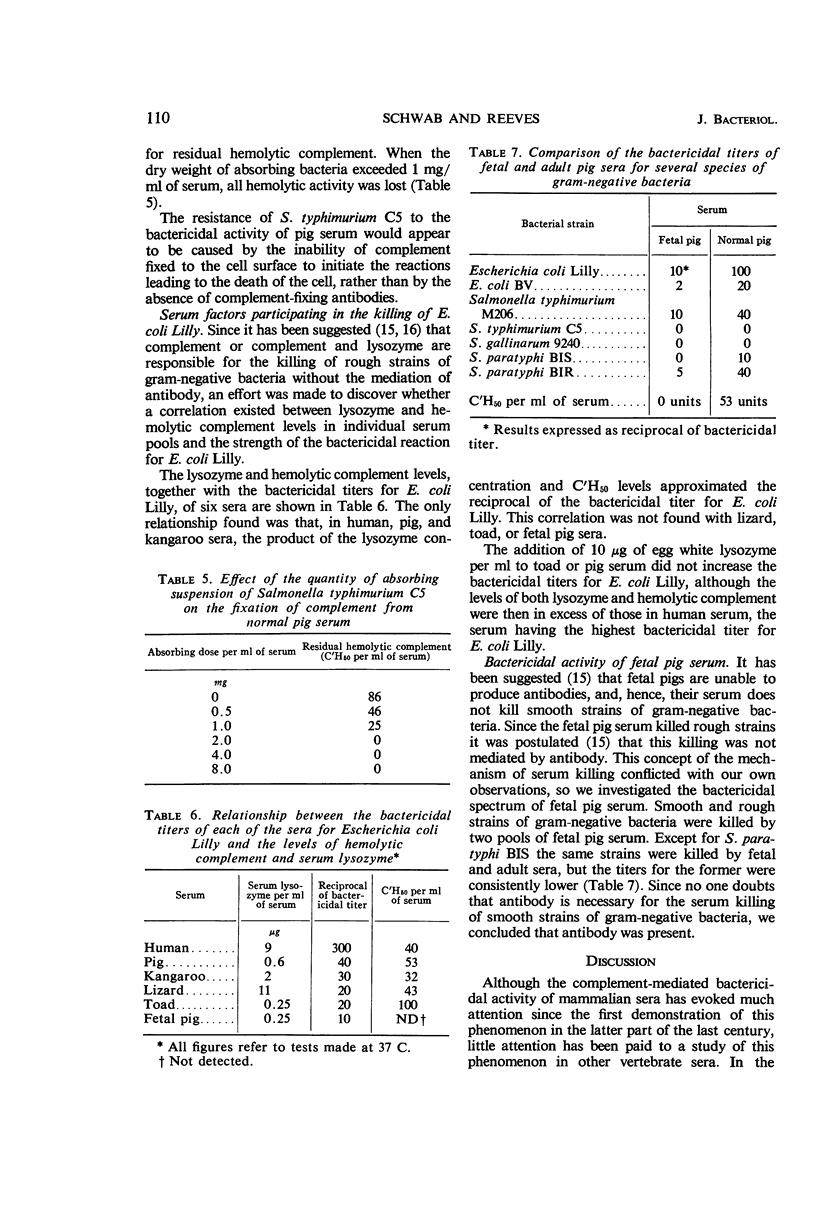
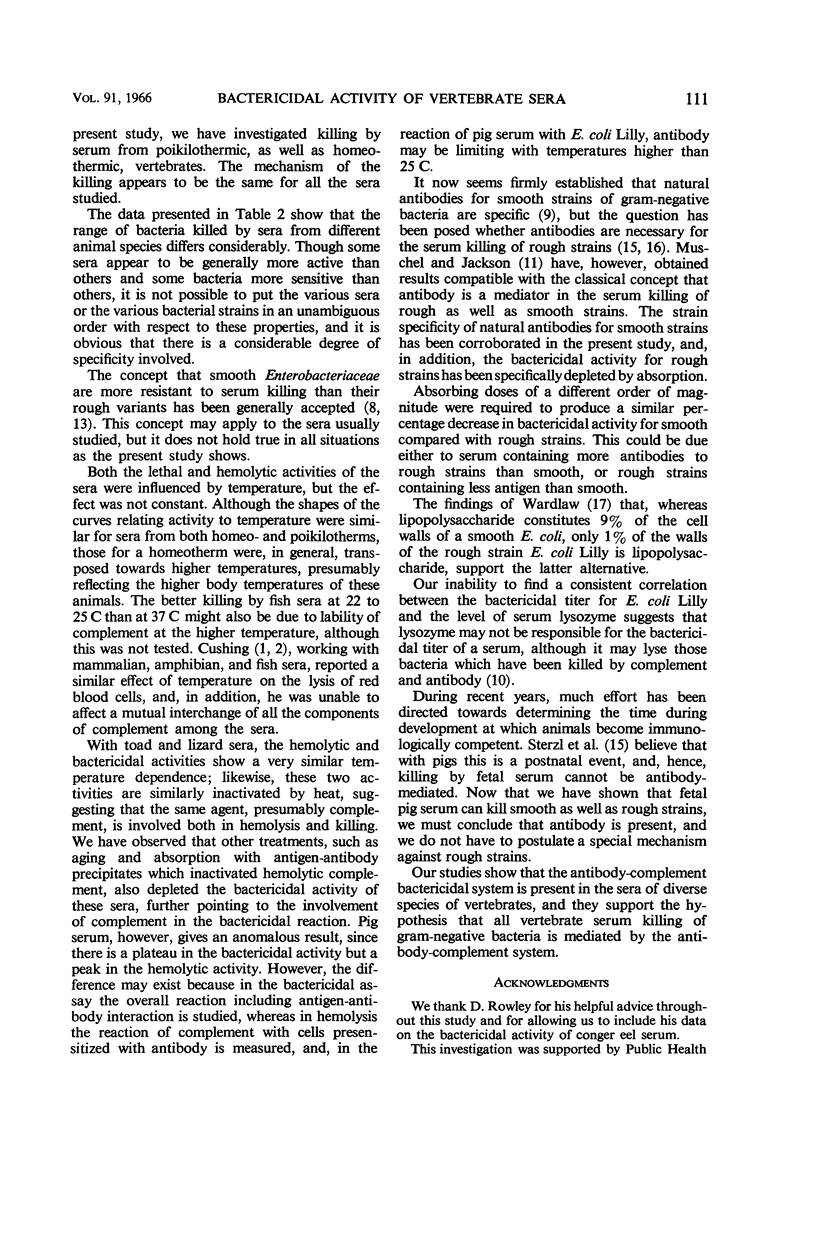
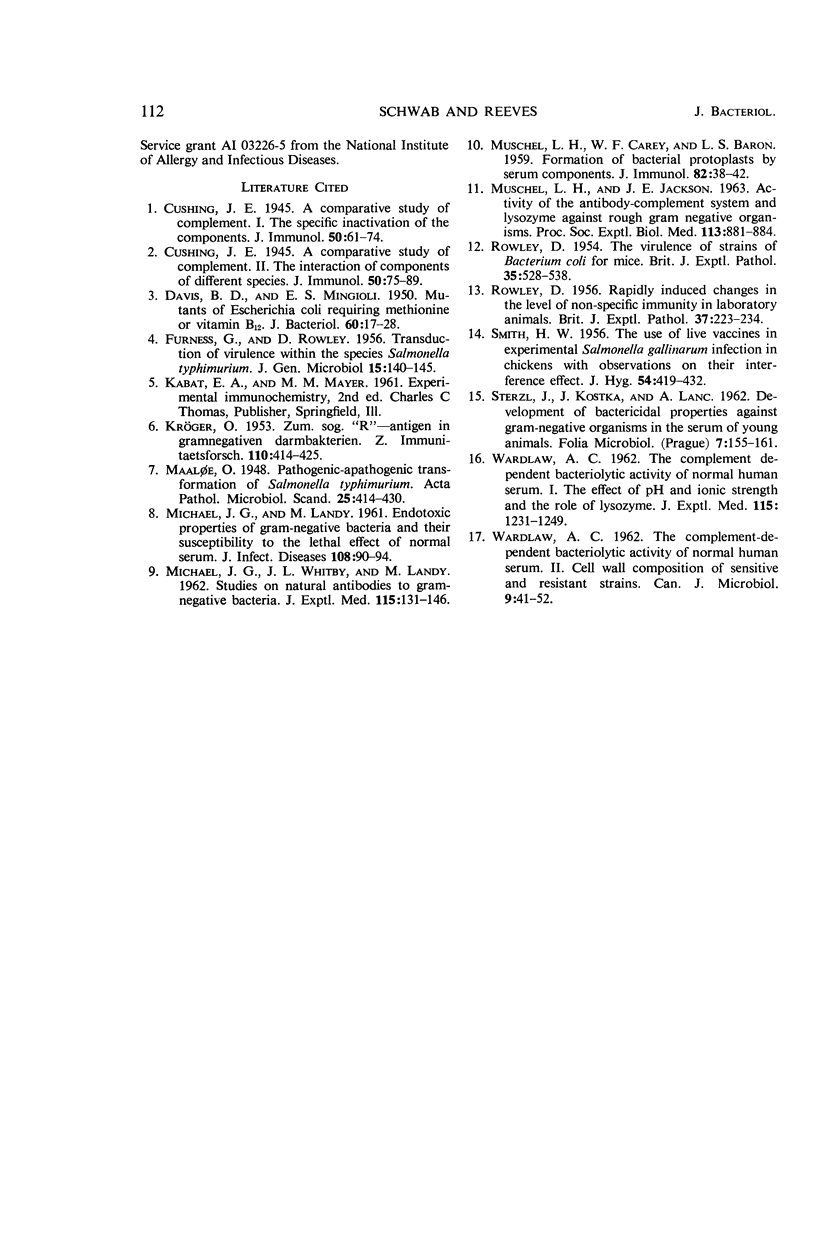
Selected References
These references are in PubMed. This may not be the complete list of references from this article.
- DAVIS B. D., MINGIOLI E. S. Mutants of Escherichia coli requiring methionine or vitamin B12. J Bacteriol. 1950 Jul;60(1):17–28. doi: 10.1128/jb.60.1.17-28.1950. [DOI] [PMC free article] [PubMed] [Google Scholar]
- FURNESS G., ROWLEY D. Transduction of virulence within the species Salmonella typhimurium. J Gen Microbiol. 1956 Aug;15(1):140–145. doi: 10.1099/00221287-15-1-140. [DOI] [PubMed] [Google Scholar]
- KROGER E. Zum sog R-Antigen in gramnegativen Darmbakterien. Z Immun exp ther. 1953 Oct 20;110(5):414–425. [PubMed] [Google Scholar]
- MICHAEL J. G., LANDY M. Endotoxic properties of gramnegative bacteria and their susceptibility to the lethal effect of normal serum. J Infect Dis. 1961 Jan-Feb;108:90–94. doi: 10.1093/infdis/108.1.90. [DOI] [PubMed] [Google Scholar]
- MICHAEL J. G., WHITBY J. L., LANDY M. Studies on natural antibodies to gram-negative bacteria. J Exp Med. 1962 Jan 1;115:131–146. doi: 10.1084/jem.115.1.131. [DOI] [PMC free article] [PubMed] [Google Scholar]
- MUSCHEL L. H., CAREY W. F., BARON L. S. Formation of bacterial protoplasts by serum components. J Immunol. 1959 Jan;82(1):38–42. [PubMed] [Google Scholar]
- MUSCHEL L. H., JACKSON J. E. ACTIVITY OF THE ANTIBODY-COMPLEMENT SYSTEM AND LYSOZYME AGAINST ROUGH GRAM NEGATIVE ORGANISMS. Proc Soc Exp Biol Med. 1963 Aug-Sep;113:881–884. doi: 10.3181/00379727-113-28519. [DOI] [PubMed] [Google Scholar]
- ROWLEY D. Rapidly induced changes in the level of non-specific immunity in laboratory animals. Br J Exp Pathol. 1956 Jun;37(3):223–234. [PMC free article] [PubMed] [Google Scholar]
- ROWLEY D. The virulence of strains of Bacterium coli for mice. Br J Exp Pathol. 1954 Dec;35(6):528–538. [PMC free article] [PubMed] [Google Scholar]
- SMITH H. W. The use of live vaccines in experimental Salmonella gallinarum infection in chickens with observations on their interference effect. J Hyg (Lond) 1956 Sep;54(3):419–432. doi: 10.1017/s0022172400044685. [DOI] [PMC free article] [PubMed] [Google Scholar]
- SOKOL F., HULKA A., ALBRECHT P. Fluorescent antibody method. Folia Microbiol (Praha) 1962 May;7:155–161. doi: 10.1007/BF02928236. [DOI] [PubMed] [Google Scholar]
- WARDLAW A. C. The complement-dependent bacteriolytic activity of normal human serum. I. The effect of pH and ionic strength and the role of lysozyme. J Exp Med. 1962 Jun 1;115:1231–1249. doi: 10.1084/jem.115.6.1231. [DOI] [PMC free article] [PubMed] [Google Scholar]


